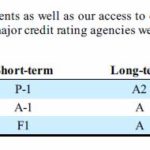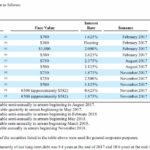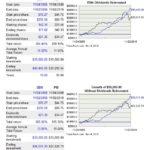Contents
Summary
- Not all invest decisions are based solely on financials.
- I have far greater confidence that BDX will be worth more than PM several years into the future.
- On the next business day I will be exiting my PM position and will be redeploying the sale proceeds to acquire more BDX shares.
Introduction
I have mentioned a number of times in previous articles that when I make decision to invest in a company I do it with the intent of retaining my shares for the long-term. On the very rare occasion I have sold shares but this was because the shares were held in a Registered Education Savings Plan (RESP). I had little choice but to sell some shares because of the following penalties that kick in if the funds held in a RESP are not used to finance education costs.
- When you close an RESP without using it for your child’s education, you must pay taxes on the money the investment has earned.
- Any Canada Education Savings Grant money must be returned or it can be transferred to a sibling who has grant room available and who needs it for their education.
In our case, there is only one child so a transfer was not possible.
Yes, I sold Paychex (PAYX) and Sun Life (SLF) shares when I withdrew funds from the RESP but I turned around and invested in those companies in other accounts.
With General Electric (GE), I liquidated our entire GE position on October 23, 2017 as I had finally lost all confidence in this company. What a terrible company in which to have invested!
This morning as I was getting ready to head to the gym for my daily 2 hour Crossfit routine I looked at myself in the mirror and the irony of having owned Philip Morris (PM) shares for so many years when I am a health fanatic finally hit me. I asked myself ‘Why the heck do I even own PM shares?’
Quite frankly, I really have no valid reason as to why I ever even acquired shares in this company in the first place. Its products offer mankind absolutely no benefit. If my thought process at the time of my PM purchase was to invest in PM because the dividend was attractive, then shame on me. There are many other companies out there that reward shareholders with decent dividends that don’t produce products which have been proven to kill people.
Not only do I not like its products but I don’t like the direction in which the financials are headed. Have a look at the following selected financial data which I extracted from PM’s 2017 10-K.
Look at the Revenue, Long-Term Debt, diluted EPS, and the dividends per share trends over the last few years. Brutal!
PM has a boatload of debt and while it generates strong Free Cash Flow which allows it to service this debt, the long-term debt level is headed in the wrong direction.
While the credit rating agencies still accord decent credit ratings, the outlook from a couple of these agencies is Negative. I don’t want to stick around until such time as these agencies finally decide to downgrade PM.
The following has been extracted from page 69 of 174 from PM’s 2017 10-K:
‘Debt – Our total debt was $34.3B at December 31, 2017, and $29.1B at December 31, 2016. Our total debt is primarily fixed rate in nature. For further details, see Item 8, Note 7. Indebtedness. The weighted-average all-in financing cost of our total debt was 2.6% in 2017, compared to 2.8% in 2016. See Item 8, Note 16. Fair Value Measurements to our consolidated financial statements for a discussion of our disclosures related to the fair value of debt. The amount of debt that we can issue is subject to approval by our Board of Directors.’
Source: PM - 2017 10K
While the weighted-average all-in financing cost of PM’s total debt declined from 2016 to 2017, I don’t want to stick around if we are entering a rising interest rate environment and low cost debt is going to mature in 2019 and 2020. Furthermore, I don’t envision PM’s cost of debt declining if the rating agencies eventually decide to lower PM’s credit rating.
I have never been particularly proud of my decision to invest in PM several years ago and have come to the conclusion that my moral compass was broken at the time of my investment. In fact, I have never written an article about this company at Financial Freedom is a Journey; I started to write an article on April 5 2018 but quickly lost interest in it.
Now that I have made a decision to exit my PM position I need to figure out what I am going to do with the proceeds of sale.
Turns out that I really don’t have to look too far because the PM shares are held in the same account as our Visa (V) and Becton Dickinson (BDX) shares. This account is one of the accounts for which I do not disclose details for privacy reasons.
V and BDX are companies I really like. We initiated a position in V within a month after its IPO and have periodically added to our position; it is our largest holding.
We have also owned BDX shares for a very long time (well before the Carefusion and C.R. Bard acquisitions).
All dividends for both companies have been automatically reinvested over the years and our average cost for both holdings is obscenely low.
I essentially just leave all our holdings on auto pilot which has clearly turned out to be one of the best decisions I have ever made. I think if I had ever become an active trader and had tried to outguess the market I would have managed to mess things up…big time.
So, what have I decided to do with the PM sale proceeds? Well, I flipped a coin. It landed on ‘heads’ which was the BDX side of the coin.
I wrote a couple of BDX articles for my subscribers back in January 2018. In my January 30, 2018 article I concluded with:
‘I do not deny that BDX is a great company. If it were not, I would have sold my shares by now. My concern at this stage, however, is that BDX is overpriced as a result of many investors experiencing the ‘fear of missing out’ phenomenon.
As noted in my previous post, I would be receptive to acquiring additional shares despite BDX’s long-term debt credit ratings having been downgraded to non-investment grade-speculative and lower medium grade. My reasoning is that I strongly suspect BDX will generate strong positive cashflow which will enable management to achieve its plan of restoring BDX’s credit rating to investment grade (BBB (S&P) BBB-(Fitch) Ba1 (Moody’s)) over the next 3 years.’
BDX’s share price at the time of that article was $246.28.
What did the share price do after that article? It went down, it went up, and it went down and as I compose this article, BDX is trading at $235.28 (November 2nd close).
BDX is slated to release its Q4 and FY2018 results on November 6th. Even if BDX’s stock price tanks after the earnings release I am reasonably confident BDX will be worth far more in the future which is more than I can say for PM.
In addition, I have been invested in a company for a number of years whose product has harmed people’s health. The least I can do is invest in a company which produces products to help heal people.
To those who have lost a loved one because of a PM product, I offer my sincere apology for having ever invested in this company.
BDX Financial Position
BDX is scheduled to release its Q4 2018 results on November 6th so I see no point in review its Q3 results at this stage. I recognize that I could have waited a few more days to write this article which would have provided me with an opportunity to comment on 2018 results and the 2019 projections but quite frankly, I anticipate decent results from BDX.
When BDX released its Q3 results on August 2, 2018 it upped its guidance and reaffirmed that the acquisition of C.R. Bard is expected to be accretive to adjusted dilutive EPS on a high-single digit basis in fiscal year 2019. I do not envision that BDX’s position will have changed subsequent to August 2nd.
Credit Ratings
Moody’s currently rates BDX’s long-term debt Ba1 (top tier of the Non-investment grade – speculative category). Moody’s rates PM’s long-term debt A2 so we’re looking at a 4 notch difference in credit ratings.
S&P Global rates BDX’s long-term debt BBB (middle tier lower medium grade). S&P rates PM’s long-term debt A so we’re looking at a 2 notch difference in credit ratings.
I have mentioned in countless other articles that I view myself as a relatively conservative investor. As a result, reading that I am prepared to invest in a lower rated company seems out of character.
This is the reason why I am prepared to invest in a company with lower long-term debt credit ratings….
I am of the opinion that BDX’s credit ratings will improve over time. I can’t say the same for PM. BDX loaded up on debt to acquire 2 companies and to grow its business. PM, on the other hand, appears to have been loading up on debt to buy back shares and increase its dividend.
Valuation
In BDX’s August 2, 2018 Press Release it indicated:
‘The company is narrowing its full fiscal year 2018 adjusted diluted EPS guidance to a range of $10.95 -$11.05, from a range of $10.90 - $11.05 previously. This represents growth of approximately 15.5% - 16.5% percent over FY2017 adjusted diluted EPS, and reflects the company's increased revenue outlook as well as a small decrease in the expected benefit from foreign currency. On a currency-neutral basis, the company continues to expect full fiscal year adjusted diluted earnings per share growth of approximately 12.0%.’
On August 2nd BDX closed at $245.10. Using $11 which is the mid-point of the revised adjusted diluted EPS guidance BDX was trading at a forward adjusted diluted PE of ~22.28.
With BDX currently trading at $235.58 and using the $11 revised adjusted diluted EPS guidance we get a forward adjusted diluted PE of ~21.42. Not cheap but better than BDX’s valuation on August 2nd.
Dividend, Dividend Yield, Dividend Payout Ratio
PM’s dividend history can be found here and BDX’s dividend history can be found here.
There is no denying that PM’s dividend yield of ~5.14% is far better than BDX’s dividend yield of ~1.27%.
My concern with PM’s dividend payout ratio is that I don’t envision the dividend payout ratio dropping significantly any time soon. In the case of BDX, however, once it completes the integration of Carefusion and C.R. Bard, all the integration related expenses will disappear and we will likely see a surge in Free Cash Flow. This will allow BDX to repurchase shares and increase its dividend….and, of course, probably make more acquisitions.
Historical Performance
Let’s face it. PM is a slow growth business and BDX is a high growth business. We’re comparing apples and oranges here.
Are you looking to invest in a company with a low probability for growth but with a fat dividend or are you looking to invest in a company with a higher probability for growth but with a much lower dividend.
Personally, I have far greater confidence that an investment in BDX will be worth far more 10+ years into the future than an investment in PM. This is why I would rather place my money on BDX than PM.
Just have a look at how BDX and PM have performed relative to each over the past 5 and 10 years.
Source: Tickertech
Final Thoughts
I fully recognize that not everyone will be in agreement with my decision to exit PM but that’s okay. If we all thought alike then there would be no market.
If you REALLY need the income from your investments then you will most likely have absolutely no intention of parting with a high dividend yielding stock like PM and investing in something like BDX.
In my case, my decision to part with my PM shares is not driven solely by the hard numbers. My decision to part with PM takes into consideration that I just can’t fathom myself continuing to invest in a company which sells a product I abhor.
I didn’t know it back in grade 6 when I tried a cigarette for the first time and was sick for a few days that that would probably be one of the most valuable lessons of my life (you don’t easily forget tossing your cookies for the next 24 hours and missing out on a weekend of being able to play with your friends). You would think that I would have kept that experience in mind when I made the ridiculous decision of investing in PM several years ago.
PM – I’m out. I’m not going to look in the mirror again and wonder what the heck you’re doing in my portfolio!
I wish you much success on your journey to financial freedom.
Thanks for reading!
Note: I sincerely appreciate the time you took to read this article. Please send any feedback, corrections, or questions to [email protected].
Disclaimer: I have no knowledge of your individual circumstances and am not providing individualized advice or recommendations. I encourage you not to make any investment decision without conducting your own research and due diligence. You should also consult your financial advisor about your specific situation.
Disclosure: I am long BDX, V, PAYX, and SLF and am exiting PM.
I wrote this article myself and it expresses my own opinions. I am not receiving compensation for it and have no business relationship with any company whose stock is mentioned in this article.







